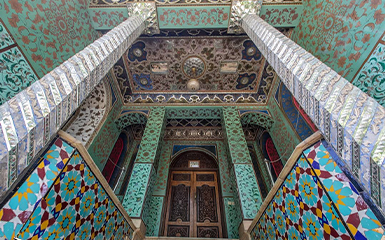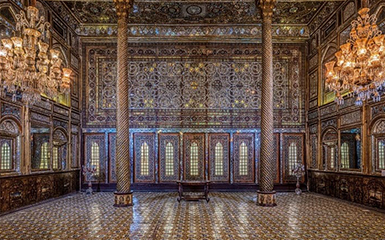Ardabil
Arg-e Bam
Abyaneh
Babak Castle
Behistun
Chogha Zanbil
Dasht-e Lut
Golestan Palace
Isfahan
Imam mosque
Kashan
Kharanaq
Mashhad
Masuleh
Meymand
Pasargadae
Naqsh-e jahan
Naqsh-e Rostam
Persepolis
Rayen Citadel
Saint Thaddeus
Saint Stepanos
Shiraz
Shushtar
Sultan Amir Ahmad
Tabriz
Takht-e Soleyman
Tehran
Tower of Silence
Yazd
Golestan Palace

The sumptuous Golestan Palace is a true masterpiece of the Qajar era, which exemplifies the perfect introduction of majestic Persian architectural forms. Housed in a magnificent garden made up of ponds and planted areas, it is equipped with very attractive elements. Today, he remains a source of inspiration for Iranian architects.
It is not enough for a building to be old to lose its luster. Built in Golestan Palace, Emarat Badgir is an old building that still impresses with its splendour. Explore it, and you will discover a main room, two side rooms, two vestibules and a room in the basement equipped with a basin. The master bedroom is decorated with magnificent stained glass windows, spiral-shaped plaster columns and painted marble plinths. Its floor has painted ceramic tiles. At the ceiling, you will see that it is decorated with mirrors and paintings, which is rare inside Golestan Palace.
A building came into being in 1867 after the great Nasser-ed-in shah decided to expand the palace. Shams-ol-emareh is one of the grand works of this imperial prince. It represents the most imposing part of the palace. The building has two identical towers. An exterior view will have you appreciating its intricate tiling and ornate windows. Its advantage over other constructions in Tehran and perhaps Iran escapes no one.
For you will admire the marble palace is exceptionally beautiful. This marquetry room might be nothing like the ones you know. Ceiling, the walls, the desk and all the other objects and accessories in the room are fascinating. The marble palace designed by an architecture that knew how to combine Eastern and Western styles. Stroll in the beautiful outdoor garden: you will have a splendid view of the facade in green marble stone as well as the cream-colored dome reminiscent in certain aspects of the Sheikh Lotfollah mosque.
Overall, it will be useful for you to immerse yourself in the history of this site. In 1786, the founder of the Qadjar dynasty chose Tehran as the capital of Persia. The Golestan Palace takes its current structure around 1865. During the reign of Reza Shâh Pahlavi, most of the buildings were destroyed giving way to administrative buildings. The palace served as a place of official receptions during the Pahlavi era. In its current state, the residence comprises a few prestigious buildings separated by administrative buildings. The set surrounds a garden with ponds.

